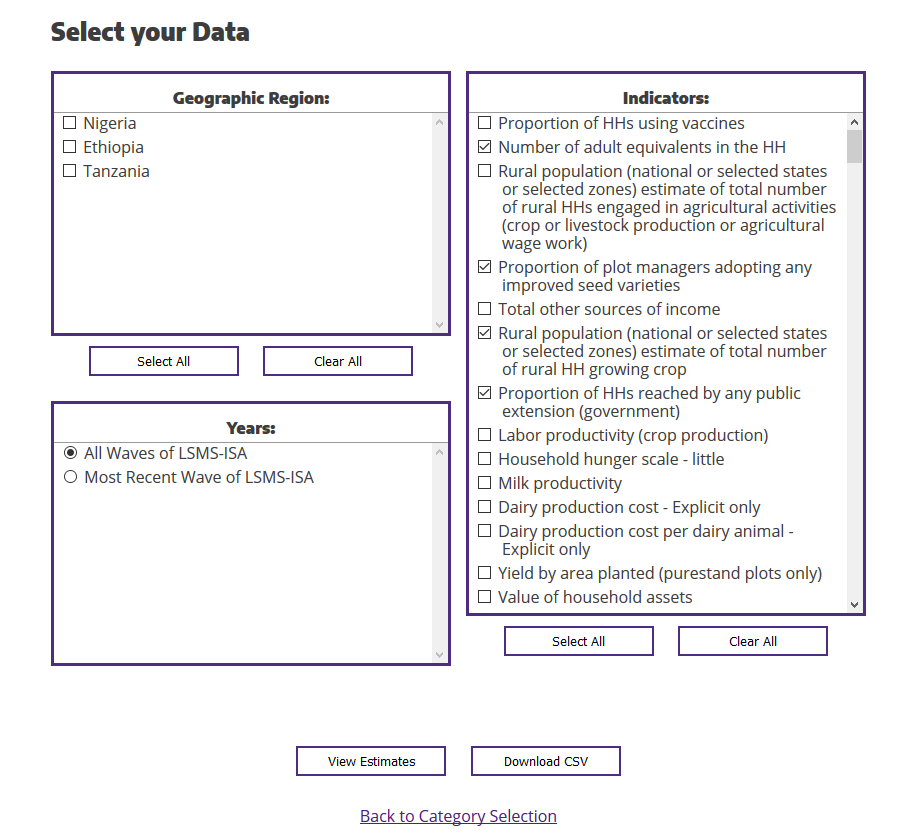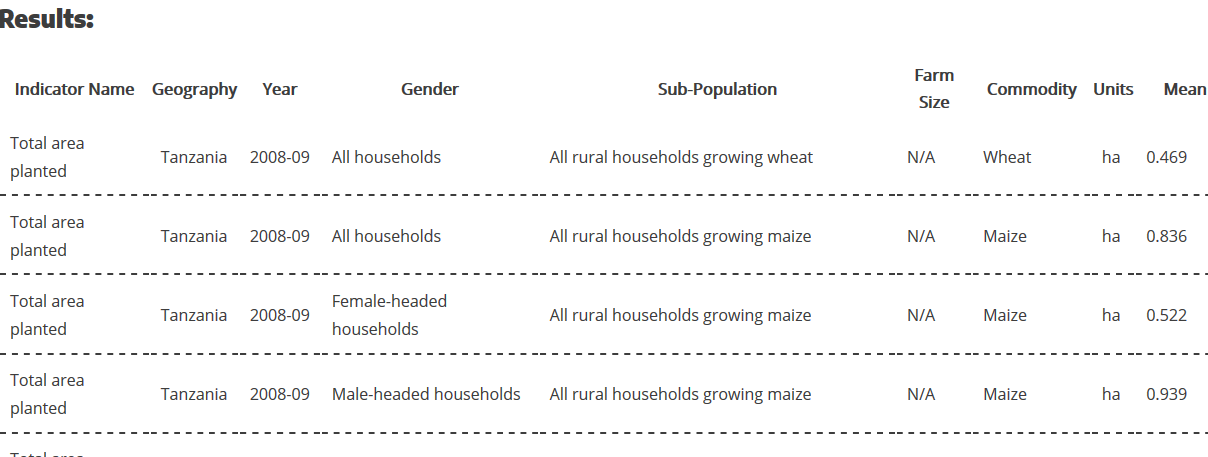For over two years, EPAR has worked to create agricultural indicators based on the data collected through the World Bank’s Living Standards Measurement Survey – Integrated Survey on Agriculture (LSMS-ISA). The World Bank collaborates with participating country statistical bureaus to conduct the LSMS-ISA in several sub-Saharan countries to collect information on crop and livestock agricultural activities and land use, fertilizer, seed and pesticide use, income, labor, nutrition, and various other household outcomes. These data are then released in a lightly cleaned format and can be downloaded from the World Bank website. Unfortunately for many analysts, these data are difficult to analyze because of the multiple modules in the instrument. Additionally, each statistical bureau asks different questions, with different units, driven by different agricultural seasons and farming systems. The example we frequently cite is the area planted by crop. In some countries the area planted is measured in terms of hectares, in others it is acres, and in still others it is a percentage of the plot. In Tanzania, for example the area planted is by quarters of a plot (e.g. 2 quarters of the plot is planted with maize).
Our agricultural data team take these data and create standardized measures which can be compared across countries and waves. To date, we have indicators for the Ethiopia Socioeconomic Survey (ESS), the Nigeria General Household Survey–Panel (GHSP), and the Tanzania National Panel Survey (TNPS). The EPAR website contains more information about our data processing and construction decisions. From this curated data set, we generate a set of summary statistics focused on agriculture, livestock and consumption. As of today, there are 148 different indicators for each country and wave. Many of these indicators are further disaggregated by gender, commodity, and farm-size.
AgQuery

Over the past year we have been working to increase the use and utility of these rich agricultural data, including analysts and decision-makers. To that end we began have officially launched AgQuery

This tool allows users to select the indicators they care about from the LSMS-ISA and download the post-curation data as a .csv file or view the data directly on the website.
Our push towards accessibility has also influenced the design of the website, particularly given that our users range from program officers at the Bill & Melinda Gates Foundation in Seattle to field researchers in sub-Saharan Africa. To accomplish this, we limit the amount of data sent by the site in order to prevent slow internet connections from becoming a barrier. By performing as many of the calculations on our server as possible, we dramatically decrease the bandwidth required to access the data. We also try to keep the page as simple as possible to increase the speed of the site on slower devices. This includes limiting our use of JavaScript (the technology that allows for highly dynamic web pages) as much as possible.
Future Development on AgQuery
Currently we are focusing on improving our backend – the parts of the tool which are largely invisible and run on our servers. This includes improving the speed and reliability of the site, but also improving how quickly we can update the data. These changes are less obvious but are vital to providing a good experience for our users and ensuring that EPAR can continue providing our data as new waves of the LSMS-ISA are released. Once that is completed, we are going to start work on giving users more control over the data they can select, for example, choosing the crops and farm size they care about. This will let our users hone their results even more finely, only viewing the information they care about while further decreasing bandwidth requirements.
By Samantha Kiel
Summarizing research by Didier Alia, Leigh Anderson, Pierre Biscaye, David Coomes, Elan Ebeling, Annie Rose Favreau, Terry Fletcher, Namrata Kolla, Jack Knauer, Josh Merfield, Travis Reynolds, Isabella Sun, Chelsea Sweeney, Emma Weaver, and Ayala Wineman